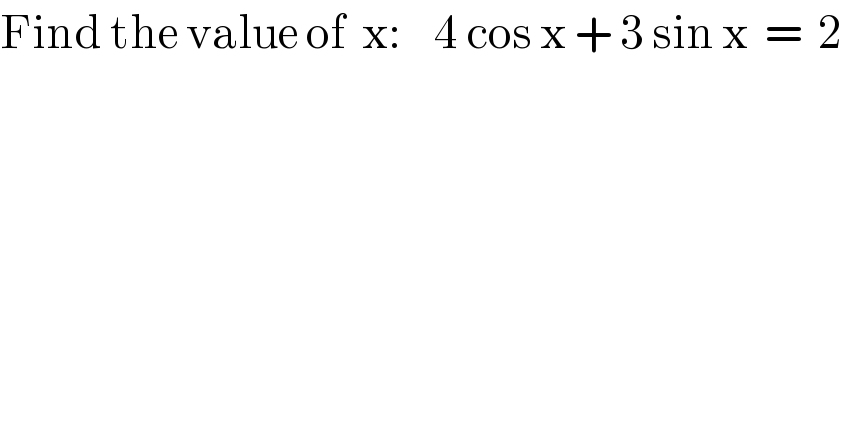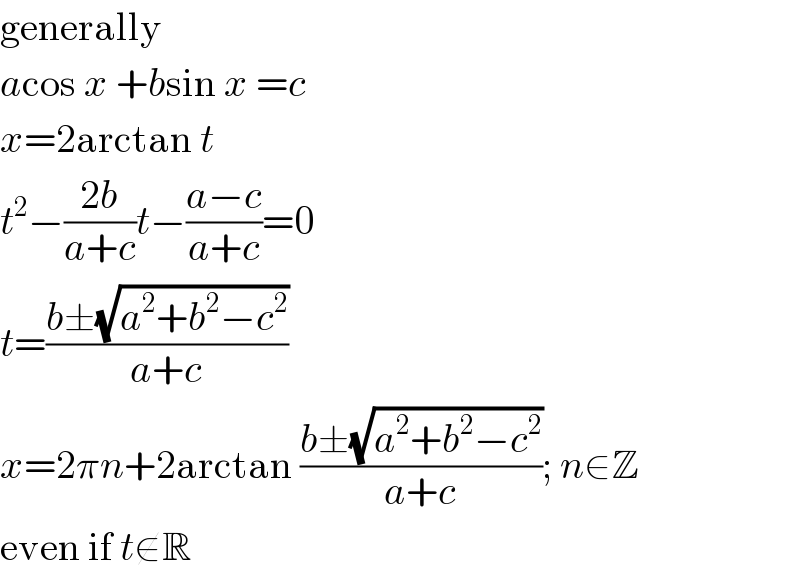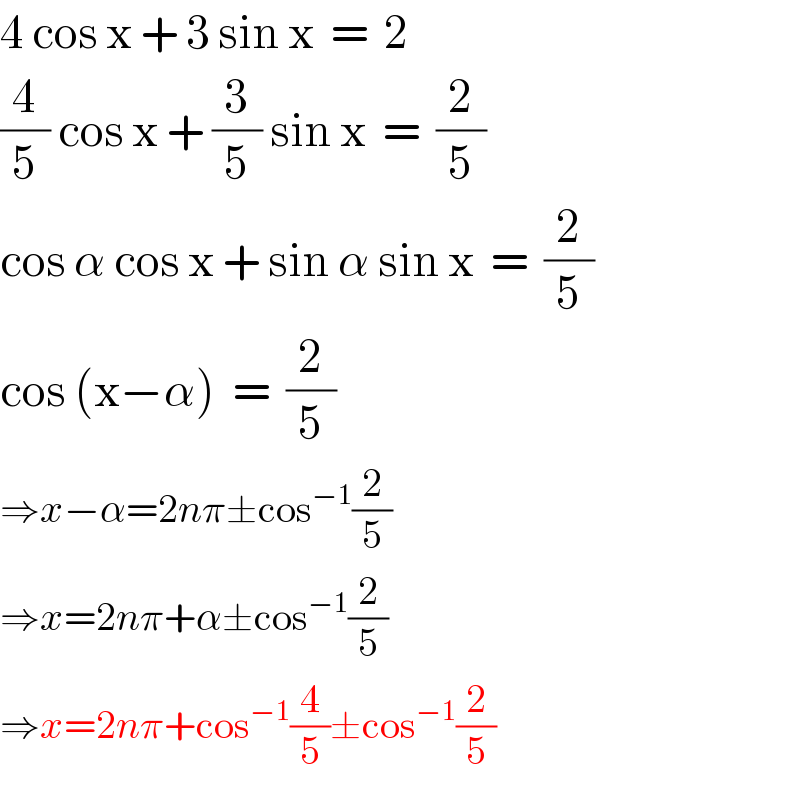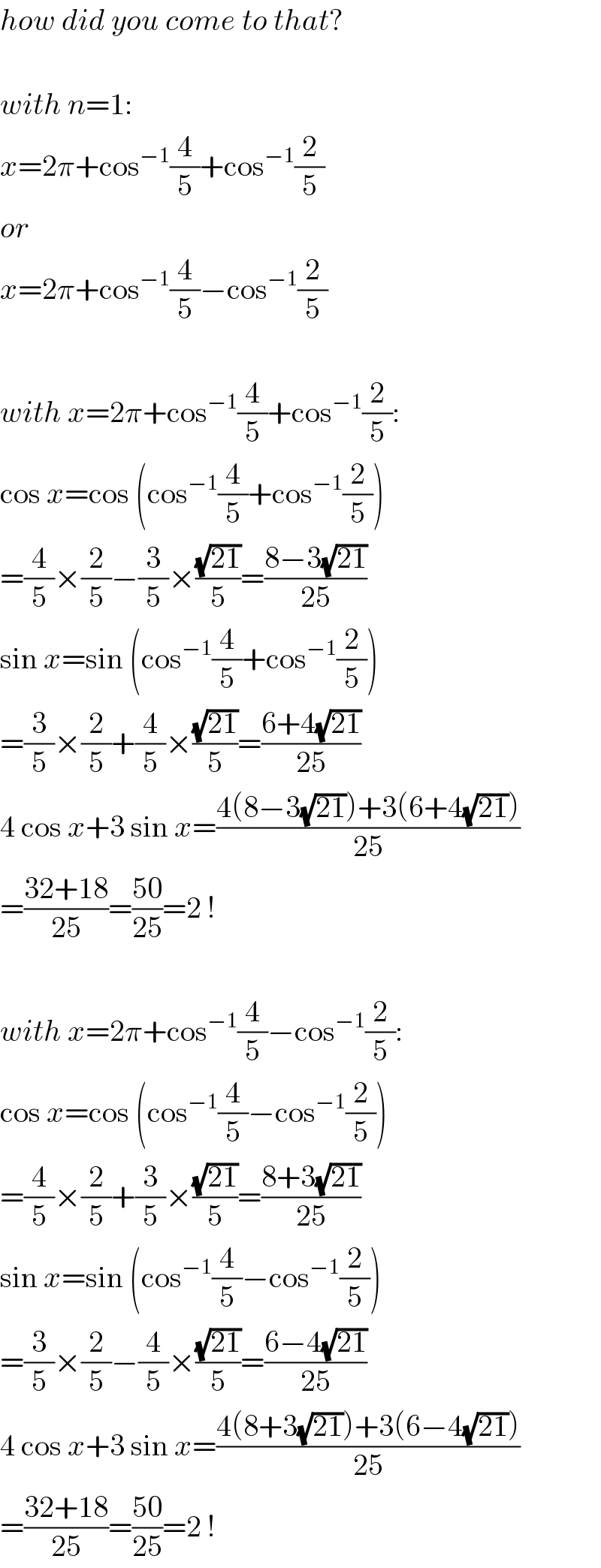
Question and Answers Forum
Question Number 58804 by Tawa1 last updated on 30/Apr/19

Commented by MJS last updated on 30/Apr/19

Answered by MJS last updated on 30/Apr/19

Commented by Tawa1 last updated on 30/Apr/19

Commented by Tawa1 last updated on 30/Apr/19

Answered by mr W last updated on 30/Apr/19

Commented by Tawa1 last updated on 30/Apr/19

Commented by Tawa1 last updated on 30/Apr/19

Commented by mr W last updated on 30/Apr/19

Commented by Tawa1 last updated on 30/Apr/19

Commented by MJS last updated on 30/Apr/19

Commented by Tawa1 last updated on 30/Apr/19

Commented by MJS last updated on 30/Apr/19

